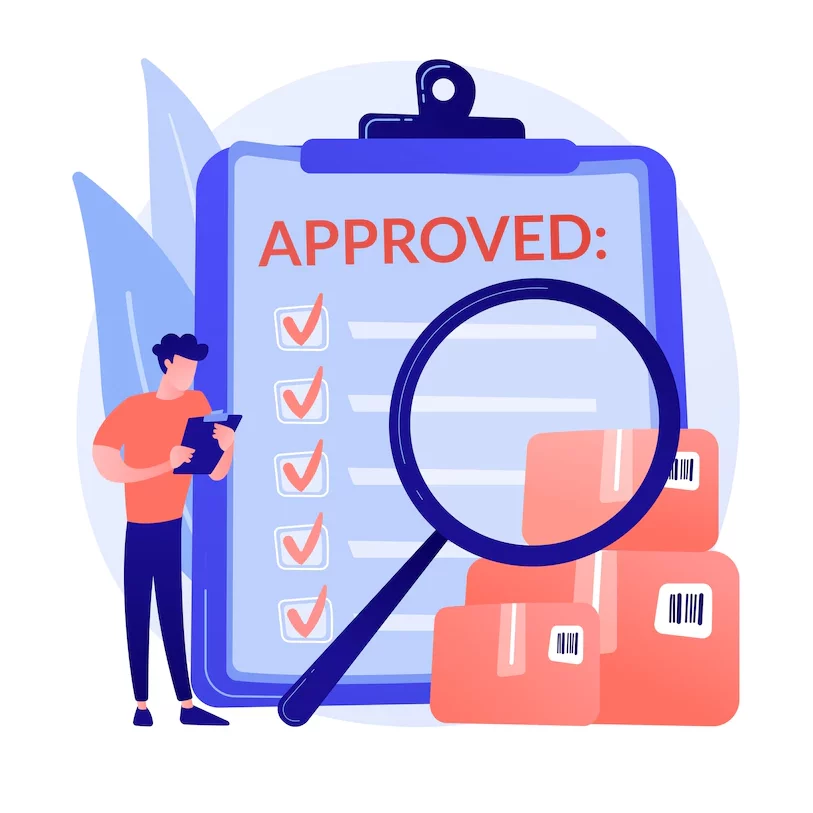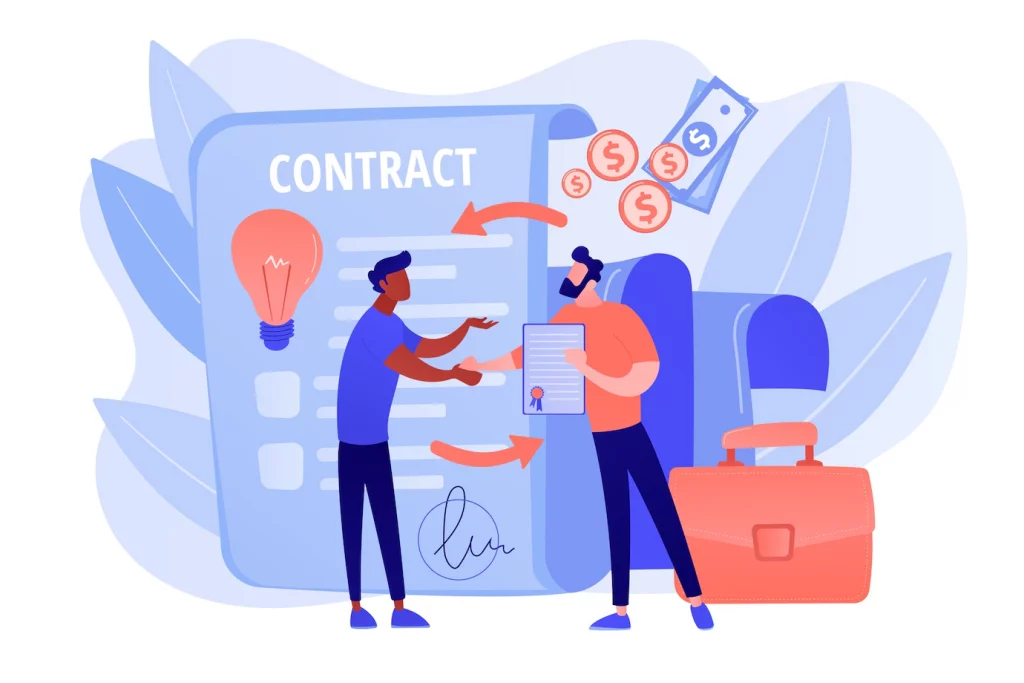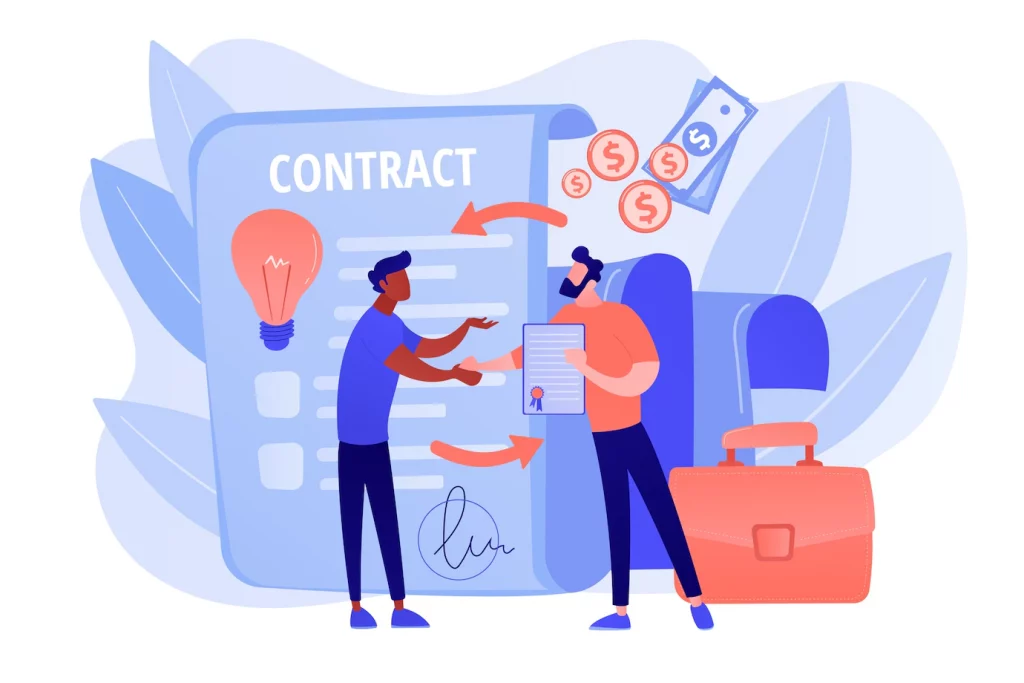Contracts are like an engine. Without them, it’s almost impossible for businesses to do anything. At the same time, contracts are a security net that helps organizations control risk and mitigate uncertainty. But, due to the complexity of their subject matter, even the most well-written agreements contain some degree of risk. In fact, contracts can and do go wrong.
Good contract management helps guarantee that key legal components are executed on time and efficiently. Since organizations rely heavily on legal documents for their activities, systematizing contracts is essential for minimizing the possibility of future errors and problems. Taking such an approach early on can lead to significant savings in time, energy, and money.
To assist the process, that’s where Contract Lifecycle Management (CLM) comes in. CLM seeks to control unnecessary risk so that companies can confidently proceed with their daily business.
There are many important benefits to CLM: allocating workloads as needed, ensuring documents are in compliance, and measuring key performance indicators. These are just a few. But where CLM truly shines is at creating an efficient, timely workflow.
CLM seeks to control unnecessary risk so that companies can confidently proceed with their daily business.
That’s because CLM breaks down the contract’s lifecycle into a series of concrete stages with distinct activities. In other words, it is a system of steps that are clear and easy to manage.
This is where CLM software can help. As a dedicated solution, it excels at managing CLM workflows in a controlled and systematic manner. Moreover, in addition to supporting CLM, software can speed up the process by automating certain steps as needed.
Sounds impressive, doesn’t it? But what are these stages that we referred to? What’s required of each one? If you’re unfamiliar with them, or if you’d like a quick refresher, then keep reading to learn the 9 stages of contract lifecycle management.
Stage 1: Contract Request

Everything has to start somewhere. And for contracts, that’s no different. Life begins the moment one party proposes a contract to another.
Naturally, a simple request won’t suffice. The request should come with information that can be used to create the document: critical dates, important milestones, relevant organizations, and so on.
This applies to all contracts, whether they’re for hiring staff, selling assets, or purchasing properties. The more information collected for the request, the easier it will be to create the contract. CLM software can support this step by not just systematizing the process, but by serving as a repository for relevant information and materials.
What is a contract request?
A contract request is exactly that. It requests that your organization consider creating a new contract. During this process, all needs and motivations behind the possible contract should be outlined. This can include the contract type, goals, and signing parties.
Businesses can make the request simpler by having an established protocol. This can be as simple as having answers to these questions: Who’s supposed to make the request? Is there a template? What information should be included? What information should be omitted?
Incoming: Desire to create a contract
Outgoing: Request to draft a contract (should include specifics like names, organizations, values, etc.)
Stage 2: Authoring

Sometimes called “drafting”, this is where all the contract’s terms, details, and conditions are laid out. Components such as deadlines, terms of service, and means of handling disputes should be specified. The authoring stage is also when those who will approve and sign the contract are determined.
As many contracts include fairly standard language – with the primary difference being personal information like the client’s name – document automation can dramatically reduce the amount of time spent on this step while drastically speeding up the process. This is something CLM software is perfectly suited for.

What is a contract draft?
A contract draft is an unfinalized agreement. At this stage, the terms and conditions of a contract are written down. This includes the rights, obligations, and jurisdiction governing the document. The draft should also follow all applicable laws, as well as industry requirements.
Incoming: Request to draft a contract
Outgoing: Contract draft
Stage 3: Negotiation

Ask any good writer and they’ll tell you the first draft of their latest novel is never perfect. There are several small aspects to finalize and unnecessary details to get rid of.
The same holds true for the legal industry. Once everyone reviews the contract, there are often some components that need adjustment. And since contracts involve at least two parties, changes must be discussed and disagreements resolved. This will trigger negotiations.
But for negotiations to be productive and efficient, preparation is required. A good approach is to gather all positions, documents, and intended outcomes in one place. Not only can CLM software serve as a repository for all this information, it can help in facilitating requests and approving amendments. This has the added benefits of saving time and freeing up resources.
What is a contract negotiation?
Contract negotiation is the process of coming to an agreement on the terms and conditions specified in the contract draft. Both parties strive to achieve highly favorable terms while minimizing financial, legal, and operational risk. When they arrive to negotiate, they should understand what they must have, what they’re willing to give up, and what are their acceptable alternatives. During negotiations, it’s almost guaranteed that the contract draft will be adjusted several times as parties try to find a compromise. In order for negotiations to end, the contract draft must be found acceptable by both parties.
Incoming: Contract draft
Outgoing: Final contract w/o approval
Stage 4: Approval

During the authoring step, a good practice is to create regular opportunities for review and approval. That way, once all parties are in agreement, the final review and approval may take less time.
Both internal and external reviews may be necessary, depending on the contract. CLM software can be used to set up internal and external review processes. Additionally, it can help make sure the designated stakeholders have the permissions they need and that no unauthorized changes can be added.
What is a contract approval?
This is where all relevant parties review, collect feedback, and approve the contracts. In addition to the signing parties, the review and approval process can also include other departments and stakeholders who are involved with the business of the contract, as well as any individuals designated for internal or external review.
If there are issues with the contract such as misspellings or incorrect information, the contract is returned for editing. But if there are issues with the negotiated terms and conditions (for example, there was a recent collapse in a currency, triggering the need for revaluation or switching to another currency), then the contract is returned for renegotiation. Once the issues are resolved, the contract is reviewed again by all parties, relevant departments, stakeholders, and reviewers for possible issues. If no issues are found and everyone is satisfied, the contract is then approved.
Incoming: Final contract w/o approval
Outgoing: Approved contract
Stage 5: Signing and Execution

After the agreement is approved, all that remains is to sign the contract. Once signed, the contract becomes legally binding and the obligations should be fulfilled as stipulated.
Signatures can be done either manually or online. However, electronic signatures must be in compliance with various regulations.
What is a contract execution?
At minimum, when a contract is executed, that means all appropriate parties signed the contract and the contract becomes a legal entity. By signing, all parties agree to uphold their contractual obligations as per the written agreement.
An executed contract can also refer to a contract that has been agreed upon, signed, and also fulfilled. Since both meanings are legally valid, whether or not a contract is executed depends on the organization, jurisdiction, or even the contract.
One aspect to be attentive to is the difference between “execution date” and “effective date”. In many cases, these two dates may be the same, but there are many other situations when they may differ. The former refers primarily to the date on which the contract was signed, while the latter refers to the time in which the agreement goes into effect.
A good example of this difference is a residential lease agreement. Most of the time, the day the lease is signed is not the same as the move-in date (a couple days are often needed in order to send the security deposit). In this situation, the execution date would be the day the lease is signed, while the effective date is the day when the new tenant can move into the apartment.
Incoming: Approved contract
Outgoing: Signed and executed contract
Stage 6: Obligations Management

From here, it’s time to start delivering the results that were promised. In other words, the parties have to fulfill their sides of the agreement. There are several ways to track contractual obligations, and the parties involved decide which method is best.
CLM supports obligations management by storing records in a secure and reliable manner. Records are also backed up to local servers and safeguarded against potential improper actions like accidental deletion.
Day-to-day management becomes easier as well. Requests and reminders can be sent automatically, allowing legal teams to focus more on high-value opportunities.
What is obligations management?
Obligations management is the process of ensuring that all contracted parties fulfill their contractual commitments. This involves regular checks and reminders to confirm that tasks were completed, prohibited actions were avoided, payments were made, and products or services were delivered. Common obligations are payment information, background checks, certificates of insurance, credits, penalties, refunds, and termination/renewal requirements.
Incoming: Signed contract
Outgoing: Records, reports, requests, reminders about obligations
Stage 7: Contract Amendments

Just as life changes on a daily basis, situations also change. Something may happen that forces the contract to be amended. This is especially common for long-term contracts that last for more than a year. It’s natural for there to be moments when adjustments are required. When this occurs, the involved parties repeat the previous stages as needed.
What is a contract amendment?
A contract amendment is a change to an already signed contract. Amendments allow the original contract to remain valid and legally binding while permitting essential adjustments without needing to repeat all previous steps or making a brand-new contract. Such changes can include corrections, clarifications, or deletions to the original wording.
Many confuse addendums with amendments. Although they are both used to clarify or add information, amendments relate to changes to an existing contract while addendums provide additional information that was not part of the original document.
Returning to the situation of lease agreements, an amendment might involve adjusting the amount of rent owed each month or the date on which rent is owed, while an addendum might be the addition of a new significant other’s name (as is often the case of unmarried partners who need a lease agreement for purposes of immigration).
Incoming: Request for an amendment (should include specifics pertaining to the amendment)
Outgoing: Amended contract
Stage 8: Audit and Reporting

Stakeholders should receive regular reports that indicate how the contracts are being executed and performed. Along the way, contracts may need to be reviewed on a semi-frequent basis. This is to guarantee that they satisfy various industry requirements and government regulations.
Performance analyses can also be conducted at this stage. This keeps parties informed about how well various teams, branches, or regions are working, and if there are any performance issues that must be addressed.
For this, legal teams must be able to quickly retrieve information. Knowing who accessed records, as well as who made changes and when, is useful. It’s also critical to learn about contract breaches such as late payments, non-deliveries, and improper changes.
These issues are flags that suggest potential non-compliance. Because CLM stores and indexes documents, not only can information be quickly retrieved for in-depth reports, but notifications can be tailored so that involved stakeholders are kept up-to-date.
What is a contract audit and report?
A contract audit is an examination and assessment that seeks to verify the performance of one or more parties to a contract. The primary objective of an audit is to confirm whether the parties are in compliance with the contract’s terms and conditions.
A contract report can fulfill the same objective as a contract audit, but contract reports can also be used to support and inform individuals responsible for obligations management.
Incoming: Request for a contract audit or report
Outgoing: Contract audit results or contract report
Stage 9: Renewal and/or Termination of Agreement

And just like all things have a beginning, all things must come to an end. Once a contract expires, there are two primary options: renewal or termination. In either case, the decision must be made on time. This is for everyone’s benefit as it avoids potentially negative outcomes, such as financial penalties.
In many cases, contracts contain language that stipulate automatic renewal unless one party actively terminates the agreement. CLM provides support by informing legal teams about upcoming deadlines so that they can avoid accidentally extending unneeded contracts and incurring financial losses. And through automatic reminders and notifications about important dates, CLM software can help teams avoid unpleasant situations.
What is a contract renewal and termination?
When a contract is approaching its effective expiration date, a decision must be made: renew or terminate? Renewals refer to the extension of a contract (renewals may or may not involve renegotiations or amendments), while terminations indicate that the contract will not be extended.
Incoming: Expiring contract; Termination or renewal request
Outgoing: Renewed contract OR Terminated contract
Final Thoughts
Although all of these stages can be done manually, CLM software like AXDRAFT ensures that each step can be conducted in an efficient, timely, and systematic manner. Possible financial and legal risks can be reduced, if not completely eliminated, which helps keep documents in compliance. Additionally, automating certain management activities that require little high-level thought can generate sizable financial savings while allowing legal teams to work more productively.
FAQ
The nine stages of contract lifecycle management are:
1. Request
2. Authoring
3. Negotiations
4. Approval
5. Signing & execution
6. Obligations management
7. Amendments
8. Audit & reporting
9. Renewal/termination
The first stage of the contract lifecycle is the contract request. This is the moment when two or more parties signal their intention to create a contractual relationship with each other. Without the request, a contract has no goal or purpose, and thus no reason for existence.
The four stages of a contract are its creation, negotiation, review, and execution.
A contract lifecycle management solution is a specialized contract software that helps process contracts from the moment a contract was requested to the moment when it is renewed or terminated. AXDRAFT’s CLM solution supports legal and business teams in managing all nine contract lifecycle management stages.